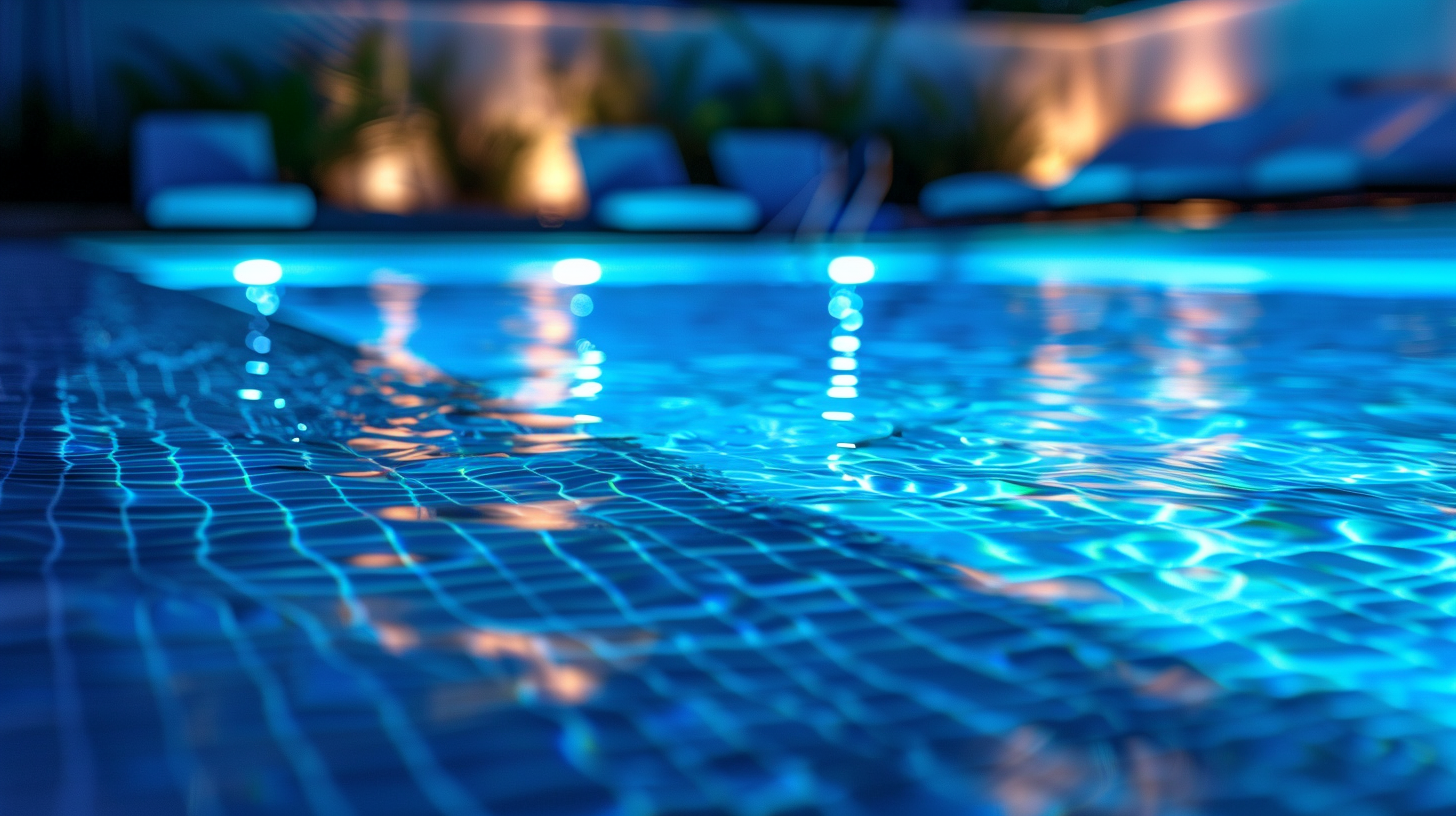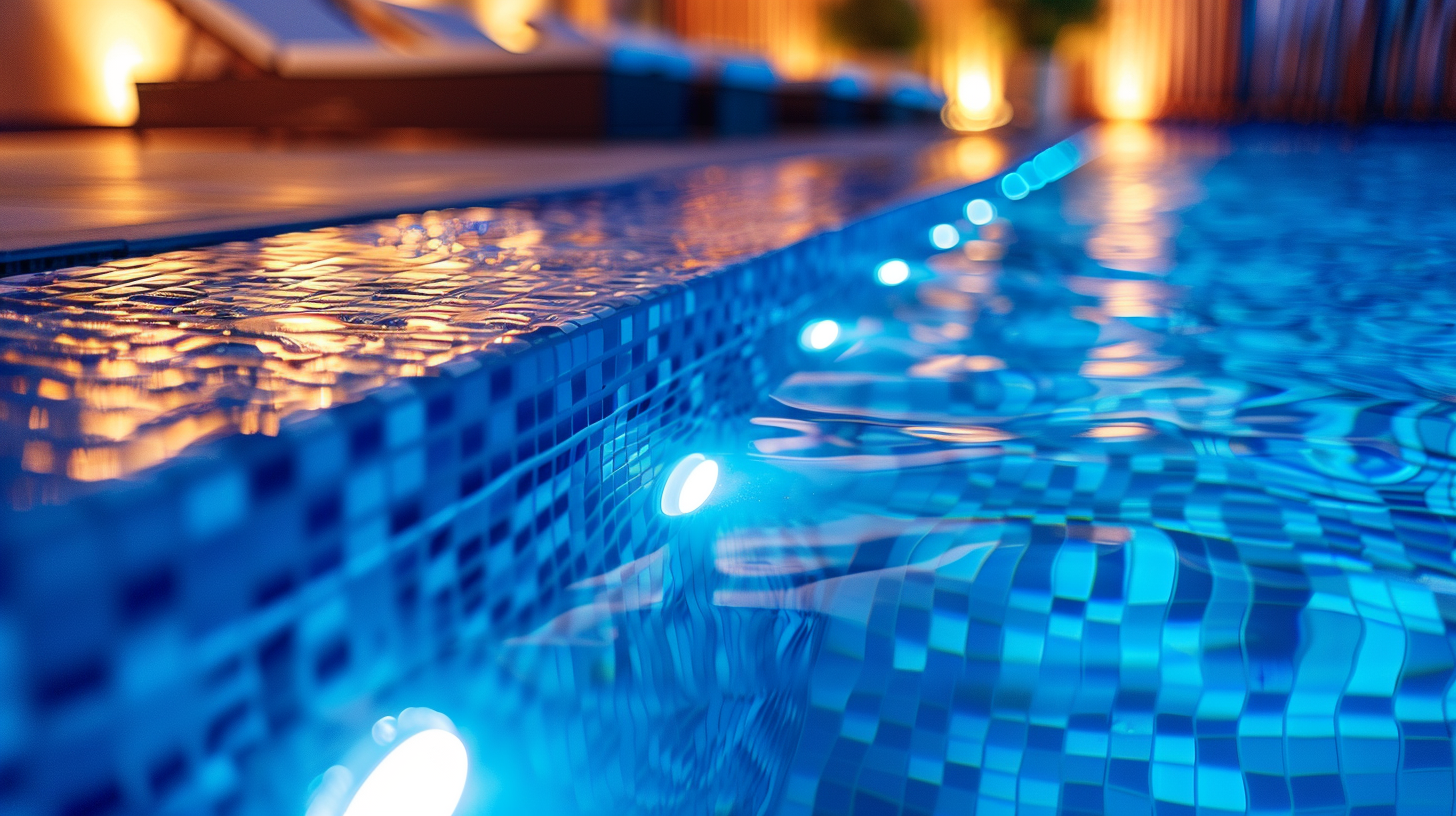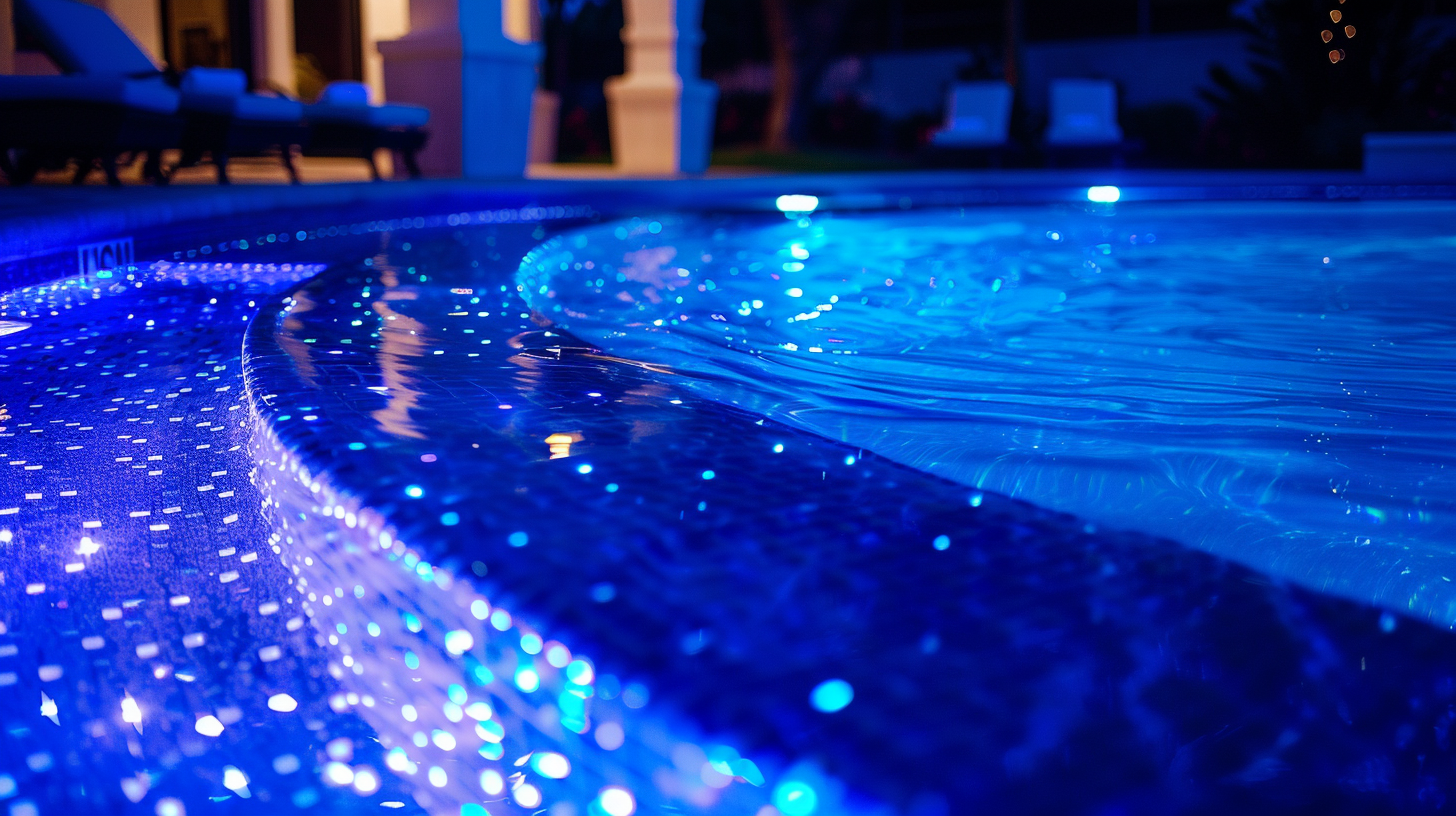How to install underwater pool lights
When it comes to transforming your nighttime swimming experience, choosing the right underwater pool lights can make all the difference. Your selection should reflect not only your aesthetic preferences but also the practical needs of your pool. To get started, you’ll want to decide between LED and halogen lights. LED lights are more energy-efficient and have a longer lifespan, but they usually come at a higher initial cost. Halogen lights, on the other hand, are less expensive upfront but consume more power and don’t last as long. Make sure to consider the long-term benefits of LED options.
Another important aspect is the color of your pool lights. White lights are classic and offer bright illumination, making them perfect for safely lighting up swimming areas. However, colored lights can add a fun, dramatic effect and can be easily switched to different hues to set the mood for various occasions. Keep in mind the ease of installation when picking your lights, too. Some models are designed specifically for hassle-free DIY installations, while others might require professional help.
Lastly, you must determine the number of lights and their placement. For standard-sized pools, installing multiple lights can create a well-balanced and illuminated space without overly bright spots. If you have a larger or irregularly shaped pool, you might need to install a few more to avoid any shadowy corners. Remember that the goal is to achieve even lighting throughout the pool to enhance both safety and beauty. Choosing the right pool lights is your first step toward a beautifully lit and inviting swimming environment.
Preparing Your Pool for Installation
Before diving into the actual installation process of your underwater pool lights, you’ll need to take some essential steps to prepare your pool, ensuring a smooth and hassle-free experience. First, start by shutting off the pool’s power supply. This precaution is crucial for your safety as you’ll be working with electrical components near water. It’s advisable to switch off the circuit breaker dedicated to the pool area to prevent any accidental electrical issues.
Next, lower the water level in your pool to expose the light niches where the fixtures will be installed. You don’t need to drain the entire pool, but make sure the area where the lights will be installed is dry, which makes the installation easier and safer. While you’re at it, take the opportunity to clean these niches thoroughly. Use a soft brush to remove any debris, algae, or buildup that might interfere with the installation of the new light fixtures.
If you’re replacing old lights, now is the time to remove them. Carefully unscrew the existing underwater pool lights and detach them from their niches. Be mindful of the wiring, as you’ll want to take note of how the old lights were connected. This will make installing the new lights more straightforward. If you’re working with new installations, ensure that the niches are free from any obstructions and are in good condition to effectively hold the new fixtures.
Having the right tools at hand can also make a significant difference. Gather your essentials such as silicone sealant, waterproof connectors, a screwdriver, and other necessary tools based on the specific lights you’ve chosen. This preparation phase is also an excellent time to double-check the specifications of your new underwater pool lights against the niches to ensure compatibility. This step can save you a lot of frustration down the road.
Lastly, if your pool has a lot of debris or if it’s been a while since you’ve given it a good clean, now is the perfect time. Skimming the surface, vacuuming the bottom, and brushing the walls not only improve the water quality but also make the environment safer and more pleasant to work in. By taking these preparatory steps seriously, you’re setting yourself up for an efficient and successful installation of your underwater pool lights.
Installing the Light Fixtures
With your pool prepared and all necessary tools in hand, you’re ready to install the light fixtures. Begin by positioning the underwater pool lights into the pre-cleaned niches. Gently place each light fixture into the corresponding niche, ensuring that it fits snugly and is properly aligned. If the light fits loosely, use spacers or mounting brackets as required to secure it firmly in place. This step is crucial to prevent any movement or dislodgement once the pool is refilled with water.
Once the fixtures are properly positioned, secure them using the screws provided in the installation kit. Tighten these screws evenly to avoid putting undue stress on one side of the fixture, which could lead to cracks or other damages. After securing the lights, apply a generous bead of silicone sealant around the edges of each fixture. This sealant is essential for preventing water from seeping into the electrical components, thereby ensuring the longevity of your underwater pool lights.
For pools with existing wiring, carefully connect the fixtures as per the manufacturer’s instructions. Typically, this will involve attaching the wires from the light fixtures to the pool’s electrical system using waterproof connectors. These specialized connectors are designed to provide a safe and secure connection that can withstand exposure to moisture. Make sure each connection is tight and properly insulated to prevent any electrical issues.
In cases where new wiring is required, you’ll need to run conduit from the power source to the light fixtures’ niches. This process might involve some digging and careful planning to ensure the conduit is adequately protected and out of sight. Once the conduit is in place, thread the wires through it and make the connections as described previously. Double-check each wire and connector to guarantee there are no loose ends or exposed wires.
Once all fixtures are installed and wired, perform a quick visual inspection to ensure everything is in order. Look for any signs of misalignment, loose screws, or unsealed areas around the fixtures. Correct any issues you spot immediately to avoid problems later on. By paying close attention to these details, you’re ensuring that the lights will stay in place and function correctly once the pool is back in use.
After confirming that all lights are securely installed and properly sealed, you’re ready to refill the pool to its normal water level. As the water level rises, keep an eye on the light fixtures to ensure there are no leaks around the edges. If you notice any water infiltration, drain the pool partially and reseal the affected areas with additional silicone sealant.
Installing your underwater pool lights correctly is essential not only for achieving the best aesthetic effect but also for ensuring your pool’s safety. Taking the time to secure and seal each light fixture properly can save you a lot of time and hassle in the future. Plus, adding this sparkling touch to your pool can dramatically enhance your swimming experience and make those nighttime swims even more magical.
Connecting the Electrical Components
With the light fixtures securely in place, the next crucial step involves connecting the electrical components. Before any connections are made, double-check to ensure the power supply to the pool area remains turned off. Safety cannot be overstressed when working with electricity near water.
Begin by referring to the manufacturer’s instructions for your specific underwater pool lights. Typically, there are wiring diagrams and step-by-step guidelines that should be followed meticulously. Locate the electrical junction box where the pool’s wires meet the main power supply. This box is usually positioned a safe distance away from the pool to reduce the risk of electrical hazards.
For retrofitting old lights or installing new ones, start by identifying the wire colors. In most cases, you will find three primary wires: the live (usually black or red), the neutral (white), and the ground (green or bare copper). If you’re dealing with different color codes, confirm the roles of each wire using a multimeter.
Step-by-step Electrical Connection Process:
| Step | Description |
|---|---|
| 1 | Strip approximately 1/2 inch of insulation from the end of each wire. |
| 2 | Using waterproof wire connectors, connect the live wire from the light fixture to the live wire from the junction box. Twist the wires together and secure with a connector. |
| 3 | Repeat the process for the neutral wires, ensuring a snug connection. |
| 4 | Attach the ground wire to the corresponding ground screw or terminal in the junction box. |
| 5 | Wrap each connection with electrical tape for added insulation and security. |
It’s essential to use waterproof wire connectors because these are designed to keep moisture out, ensuring the longevity of your electrical connections. After securing all connections, carefully organize the wires within the junction box to prevent crowding that could lead to short circuits or other issues.
Next, focus on the conduit that houses the wires running from the junction box to the pool lights. Ensure this conduit is sealed at both ends to prevent water from entering. Inspect the length of the conduit for any signs of wear or damage and replace any compromised sections immediately.
Once the wiring is complete, it’s time to activate the circuit. Turn on the power at the circuit breaker and use a voltage tester to confirm that electricity is flowing correctly to the underwater pool lights. If everything checks out, proceed to test each light fixture while the pool remains dry. Switch the lights on and off, observing for any flickering or unexpected behavior that could indicate a fault.
If anomalies are detected, switch off the power immediately and recheck all connections and components. Should issues persist, consult a certified electrician to diagnose and resolve the problem safely.
Maintaining clear and unobstructed pathways for your wiring not only ensures optimal functionality but also simplifies any future maintenance or upgrades. By adhering to these meticulous steps, you’re not only installing your underwater pool lights but also securing a safe and electrifying ambiance for your nighttime swims.
Testing and Maintenance Tips
Having successfully completed the installation and wiring of your underwater pool lights, it’s time to make sure everything is working perfectly. Start by ensuring the pool is filled to its normal water level and that no water has seeped into the light fixtures. Now, power up the system and turn on the underwater pool lights. Observe carefully—each light should shine brightly and evenly. If any lights flicker or fail to operate, there might be an issue with the connection or the fixture itself.
Your first test involves checking for leaks. Inspect the edges of each light fixture to ensure no water is infiltrating the seals. A small flashlight can help you spot leaks in less obvious areas. If water is penetrating, you’ll need to drain the pool partially and reseal the faulty areas with extra silicone sealant. Don’t ignore this step—water inside the light fixtures can lead to electrical shorts and potential hazards.
Next, examine the lighting intensity and coverage within the pool. Move around different parts of the pool to ensure the lighting is uniform and that there are no dark spots. If the distribution isn’t ideal, you may need to adjust the positions of the lights slightly. Some modern underwater pool lights come with adjustable features, making this task easier. If you’ve installed colored lights, cycle through the various colors to ensure each setting works correctly.
Mild adjustments are often needed to achieve the perfect ambiance. Once you’re satisfied with the performance, try different lighting scenarios, such as dimming or changing colors if your lights have these features. This will help you understand the full capability of your lights and set the mood for various occasions, from casual swims to poolside parties.
Over time, regular maintenance is essential to keep your underwater pool lights in top condition. Routine checks should include monthly inspections of the light fixtures for signs of wear or damage. Look for any cracks in the casing or loosened screws, as these could allow water to seep in. Reapply silicone sealant if you notice any cracks developing.
Every three to six months, thoroughly clean the lens of each underwater pool light to remove any algae, calcium deposits, or debris. Use a soft brush and a mild cleaning solution to avoid scratching the lens. Clearing surface buildup ensures maximum light output and maintains the aesthetic appeal of your pool.
Additionally, every year—preferably before the swimming season begins—conduct a comprehensive electrical inspection, especially if your pool is exposed to harsh winter conditions. Check all electrical connections within the junction box and conduit for corrosion or degradation. Re-tighten wires and apply fresh waterproof connectors if necessary. Hiring a professional electrician for this annual review can provide an added layer of safety and guarantee all components function flawlessly.
Don’t forget about the importance of water quality maintenance. High levels of chemicals or imbalanced pH levels can deteriorate the seals and materials of your pool lights over time. Regularly test your pool water and adjust chemical levels to stay within recommended ranges. This simple routine ensures the longevity of your underwater pool lights and enhances the overall swimming experience.
Incorporating these testing and maintenance tips will not only keep your pool lights glowing brightly but also extend their lifespan, ensuring that your investment pays off in the long run. Your well-lit pool will remain a stunning and safe focal point for years to come.


